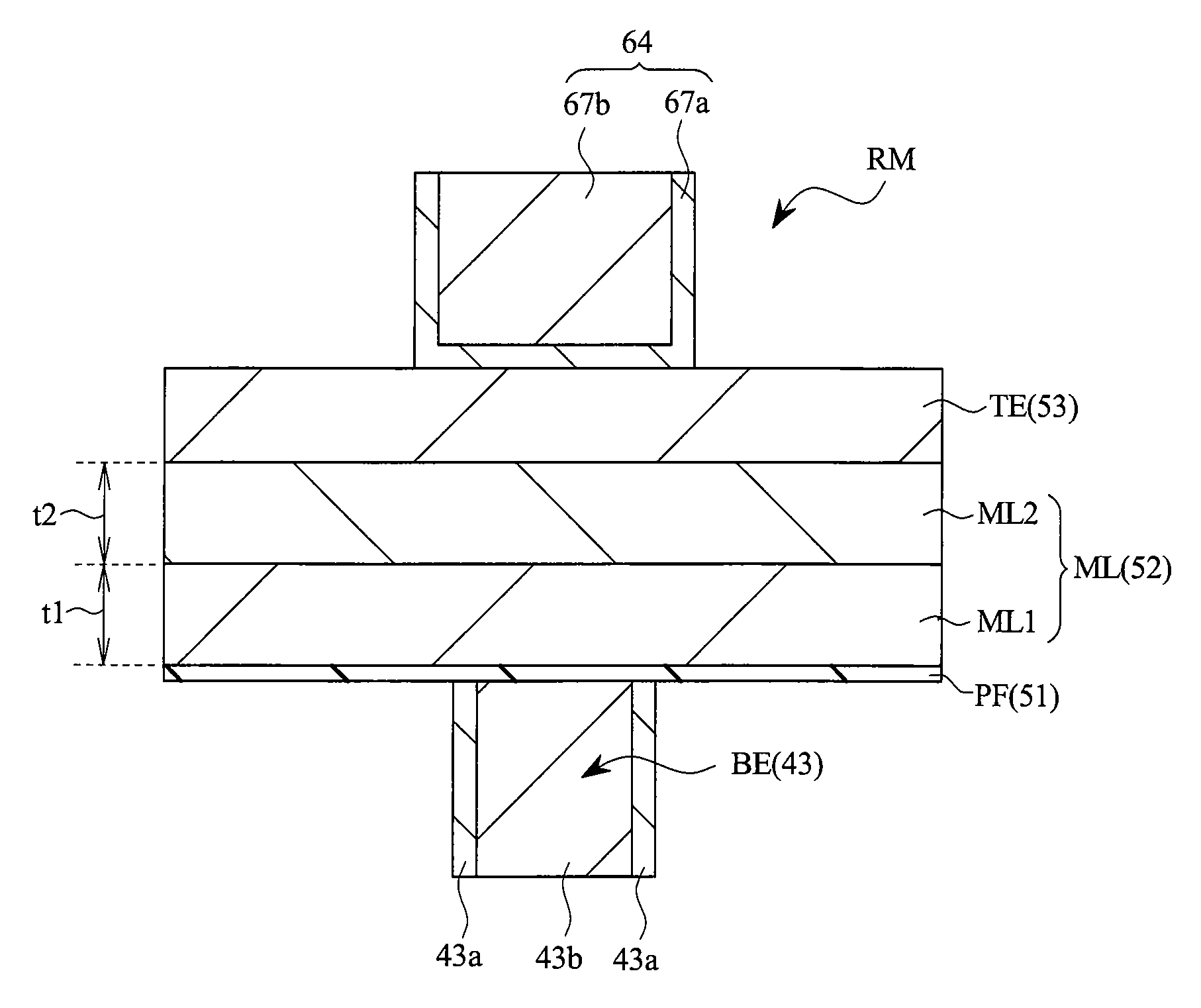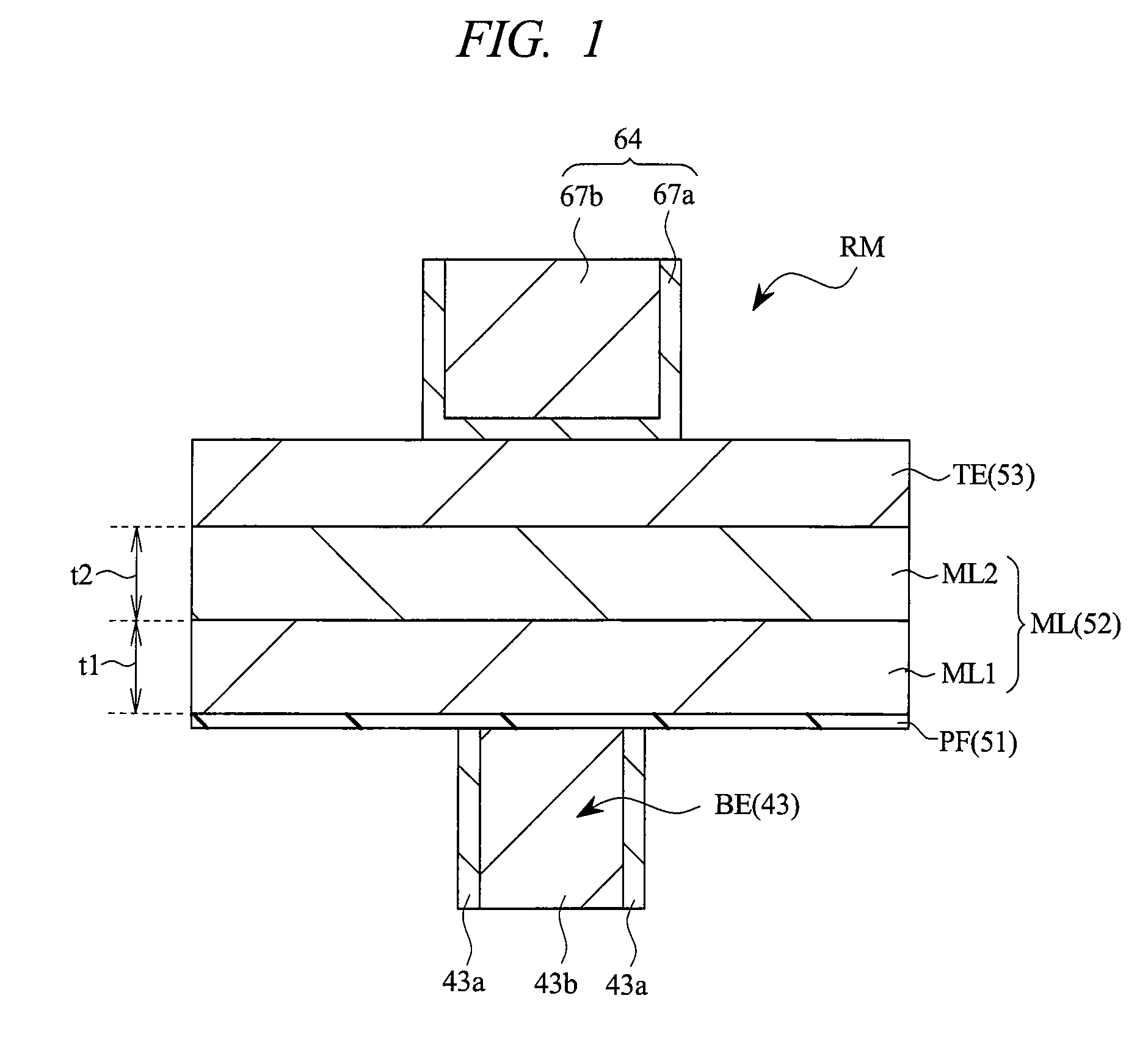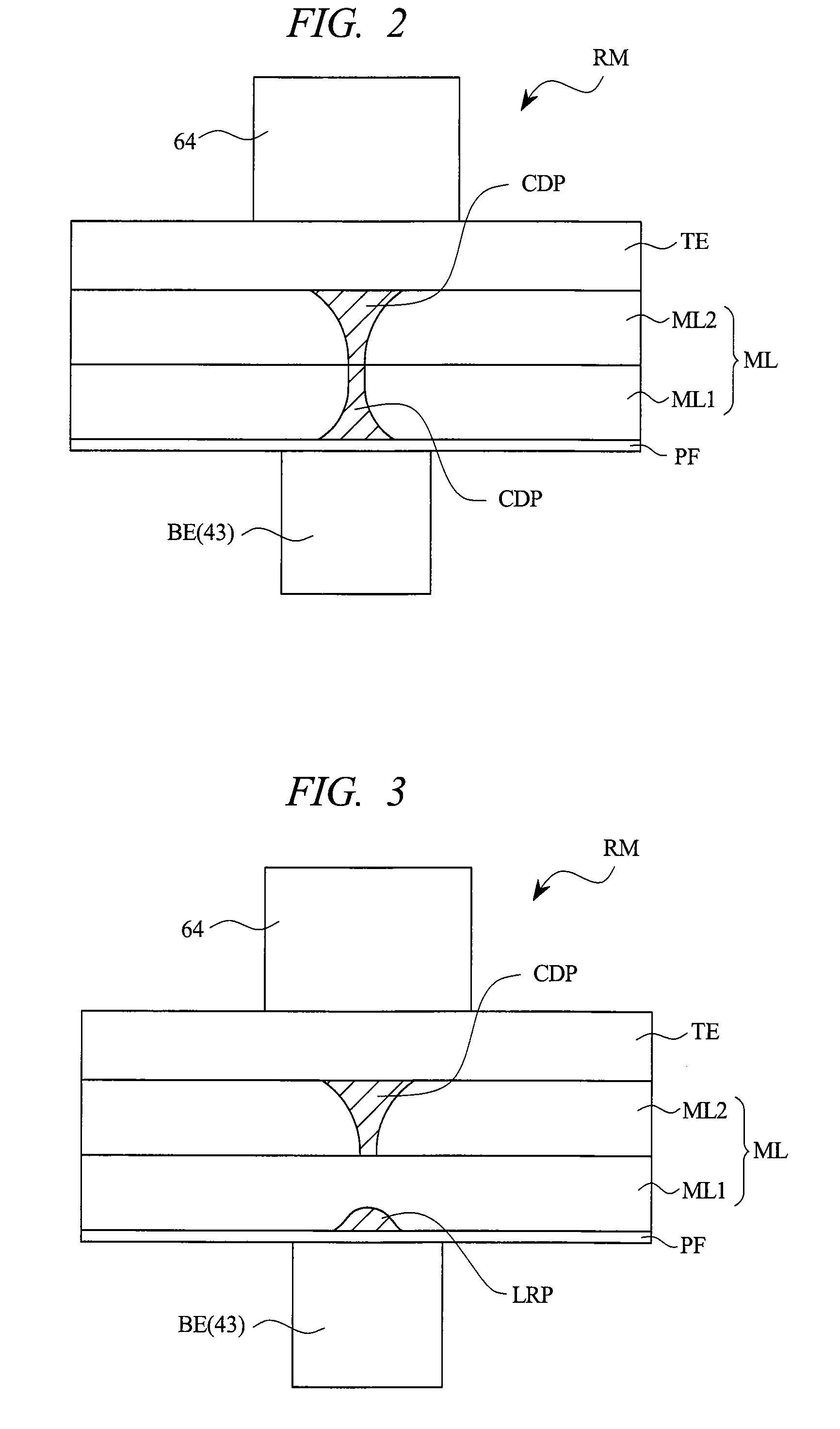Semiconductor device
a semiconductor and device technology, applied in semiconductor devices, digital storage, instruments, etc., can solve the problems of unstable rewriting characteristics, inability to meet the requirements of the device, and the concentration of ag, cu, or the like in the solid electrolyte becomes too high, so as to improve the performance of the semiconductor device
- Summary
- Abstract
- Description
- Claims
- Application Information
AI Technical Summary
Benefits of technology
Problems solved by technology
Method used
Image
Examples
first embodiment
[0069]A semiconductor device of an embodiment of the present invention and a fabrication method thereof will be described with reference to the accompanied drawings.
[0070]FIG. 1 is an explanatory diagram (cross sectional view) schematically showing a memory element in the semiconductor device of the present embodiment. In FIG. 1, to facilitate understanding, illustration of insulating films (corresponding to insulating films 41, 61, and 62, which will be described later) surrounding the periphery of the memory element RM is omitted.
[0071]As shown in FIG. 1, the memory element (storage element) RM of the present embodiment has a memory layer (recording layer, memory material layer) ML, a bottom electrode (plug-type electrode, conductive portion, first electrode) BE, and a top electrode (top electrode film, conductive portion, second electrode) TE, and the bottom and top electrodes are respectively formed on both surfaces (mutually opposite surfaces, which are the lower surface and th...
second embodiment
[0239]FIG. 32 is an explanatory diagram (cross sectional view) schematically showing a memory element RM in a semiconductor device according to the present embodiment and corresponds to FIG. 1 of the above-described first embodiment. FIG. 33 is an explanatory diagram (graph, triangular diagram, composition diagram) showing a desired composition range of the material forming a top electrode TE1 in the memory element RM of the present embodiment.
[0240]The memory element RM of the present embodiment shown in FIG. 32 has an approximately same constitution as the memory element RM of the above-described first embodiment except that the top electrode TE1 having a material different from that of the top electrode TE is used instead of the top electrode TE; therefore, the explanations thereof will be omitted herein except for some descriptions about the material of the top electrode TE1.
[0241]In the memory element RM of the present embodiment, the top electrode TE1 also has a function as an...
third embodiment
[0267]FIG. 38 is an explanatory diagram (cross sectional view) schematically showing a memory element RM in a semiconductor device according to the present embodiment and corresponds to FIG. 1 of the above-described first embodiment.
[0268]The memory element RM of the present embodiment shown in FIG. 38 has an approximately same constitution as the memory element RM of the first embodiment except that the first layer ML1 of the memory layer ML has a stacked structure of a plurality of layers having mutually different compositions. Therefore, except for a description about the first layer ML1 of the memory layer ML, descriptions thereof will be omitted.
[0269]In the first embodiment, the first layer ML1 of the memory layer ML has a single-layer structure. However, in the present embodiment, as shown in FIG. 38, the first layer ML1 of the memory layer ML is formed by a plurality of layers (chalcogenide layers) having mutually different compositions. In FIG. 38 and in the description bel...
PUM
 Login to View More
Login to View More Abstract
Description
Claims
Application Information
 Login to View More
Login to View More - R&D
- Intellectual Property
- Life Sciences
- Materials
- Tech Scout
- Unparalleled Data Quality
- Higher Quality Content
- 60% Fewer Hallucinations
Browse by: Latest US Patents, China's latest patents, Technical Efficacy Thesaurus, Application Domain, Technology Topic, Popular Technical Reports.
© 2025 PatSnap. All rights reserved.Legal|Privacy policy|Modern Slavery Act Transparency Statement|Sitemap|About US| Contact US: help@patsnap.com



